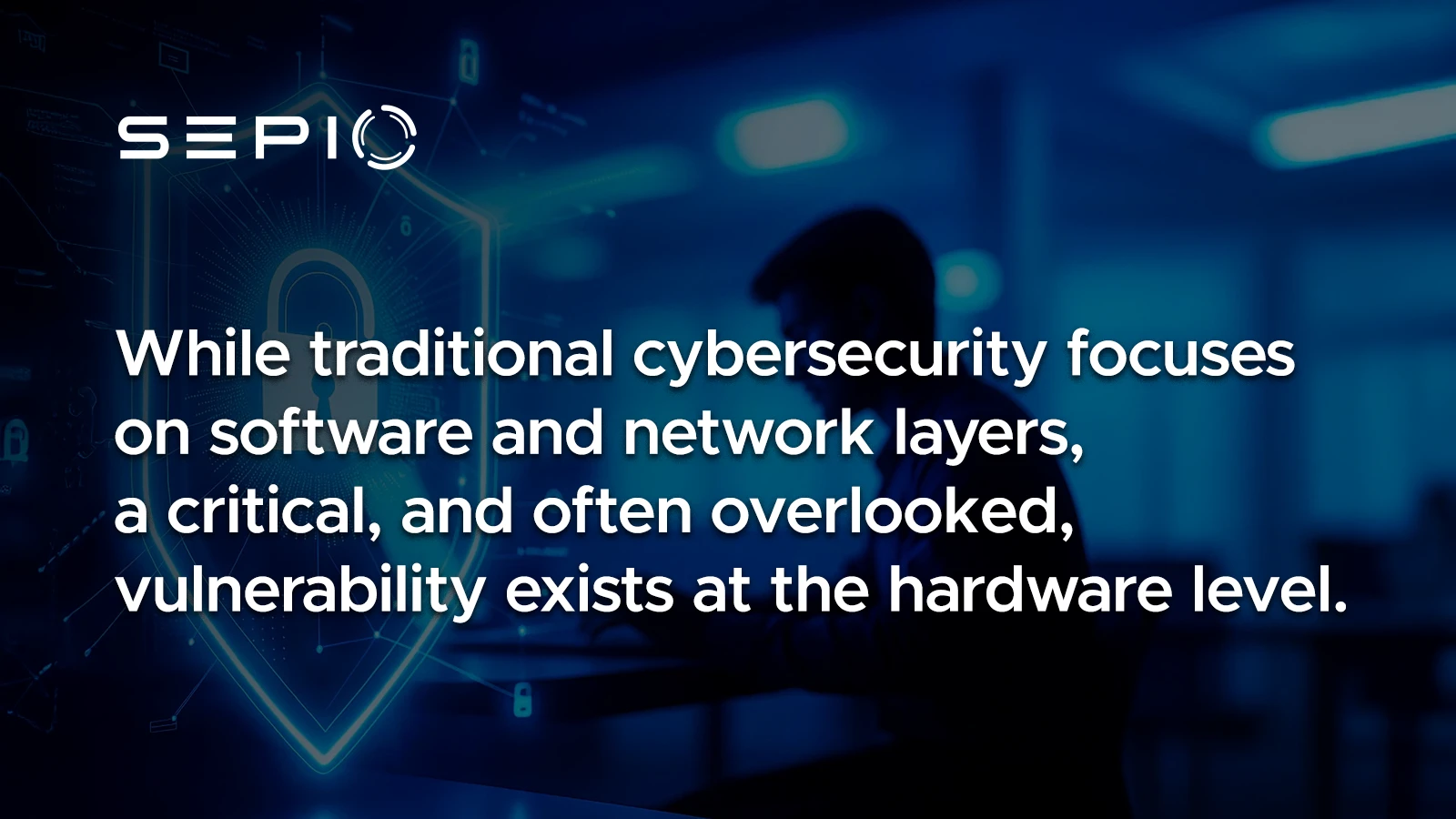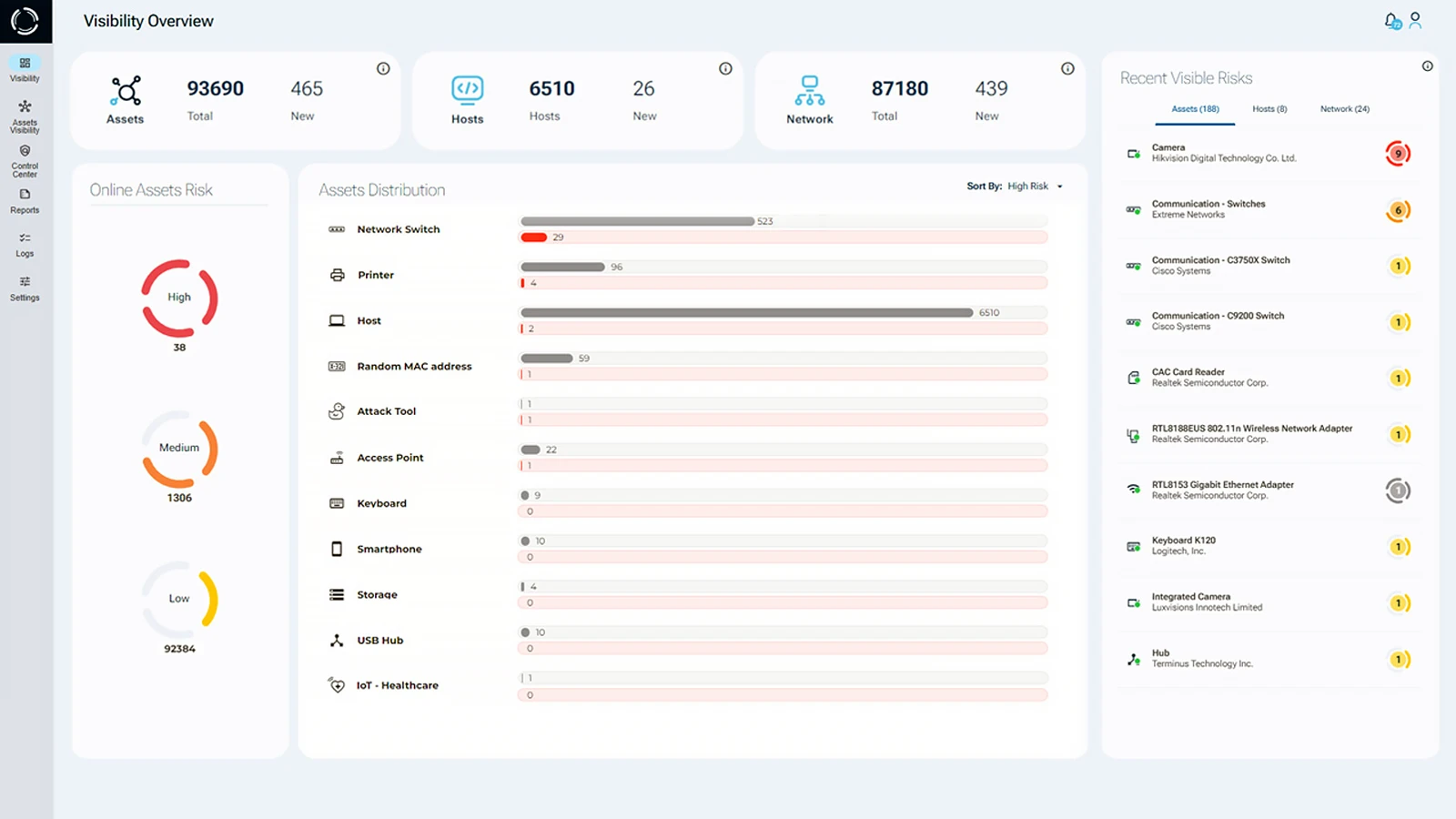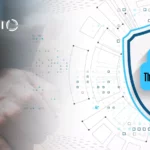Nuclear Cybersecurity
The Nuclear Operational Technology (OT) environment operates within a highly complex threat landscape. It must protect critical national security assets in an increasingly connected and digital world. While traditional cybersecurity focuses on software and network layers, a significant gap remains at the hardware level. Nuclear cybersecurity is important because protecting physical systems keeps sensitive operations secure.
This white paper explores how the Sepio Platform, a leading nuclear cybersecurity and hardware security solution, addresses these critical gaps. It delivers Zero Trust hardware visibility, which is essential for protecting nuclear operations and ensuring compliance with nuclear cybersecurity standards.
Nuclear Operational Technology Environment
Nuclear Operational Technology (OT) environments face unique security challenges. As a result, they require robust nuclear cybersecurity measures:
Advanced Persistent Threats (APTs) Targeting Nuclear Hardware
Government agencies are prime targets of sophisticated, state-sponsored APTs focused on espionage or sabotage. These attacks can remain undetected for extended periods. Furthermore, they often involve hidden hardware, highlighting the critical need for nuclear cybersecurity measures.
Supply Chain Vulnerabilities
The global supply chain poses major risks such as counterfeit hardware, unauthorized changes, and malicious components from OEMs. Regulations like NEI 08-09 and NRC RG 5.71 ban equipment from certain foreign manufacturers. This requires frequent checks to verify hardware origin and integrity. Strong nuclear cybersecurity must include supply chain inspection at the hardware level.
Proliferation of IT, OT, and IoT Devices in Nuclear Environments
Modern nuclear operations extensively integrate Information Technology (IT), Operational Technology (OT), and Internet of Things (IoT) devices, including Industrial IoT (IIoT). This convergence greatly increases the attack surface. Many devices, especially older OT systems, were not built with strong cybersecurity and lack proper security features. This creates unique challenges for nuclear cybersecurity.
Physical Layer (“Layer 1”) Blind Spots in Nuclear Cybersecurity
Existing security solutions, such as Network Access Control (NAC), Intrusion Detection Systems (IDS), Endpoint Protection Solutions (EPS), and IoT Network Security, operate at higher network layers (Layer 2 and above). This creates a critical “blind spot” at the physical layer. Undetectable hardware attacks can bypass security protocols here, making this a major concern for nuclear cybersecurity.
Rogue Device Exploitation
Hackers exploit the Layer 1 blind spot using Rogue Devices, hardware tools like BadUSB or covert network implants. These appear as trusted devices or have no network presence (no IP or MAC address), bypassing traditional security. Moreover, small and easily accessible tools, such as Raspberry Pis can be easily configured for malicious activity and often go unnoticed.
Insider Risk
Whether intentional or accidental, employees can introduce vulnerabilities by connecting compromised personal or rogue devices, especially in remote work environments (BYOD). See CISA nuclear sector cybersecurity framework for guidance on mitigating insider risks in critical infrastructure.
Compliance Requirements
Compliance with cybersecurity frameworks like the Cybersecurity Maturity Model Certification (NRC) and NIST requires ongoing asset management and protection. This includes everything from basic cyber hygiene to advanced measures against advanced persistent threats (APTs). Therefore, full visibility and risk identification of hardware assets is crucial for meeting these requirements, and achieving Nuclear Cybersecurity compliance.
The CISA Nuclear Sector Cybersecurity Framework offers detailed federal guidelines to help organizations improve cybersecurity in the nuclear sector.

Nuclear Cybersecurity Solution
The Sepio Platform is a leading asset visibility and hardware security solution. It empowers security teams with complete control over all hardware assets, ensuring no device goes unmanaged. Key capabilities include:
Physical Layer Visibility for Nuclear Cybersecurity
- Sepio is the only company in the world to leverage data from the Physical Layer. Specifically, it calculates a unique digital AssetDNA by analyzing the electrical characteristics and device descriptors of all network connected assets.
- This feature confirms a device’s true identity, no matter what it claims or how it behaves. Yet, traditional security tools fail to inspect this layer, creating a critical blind spot. In contrast, Sepio is the only solution that brings Zero Trust to the hardware layer. This makes it essential for strong nuclear cybersecurity.
- Sepio detects network devices that don’t emit traffic or network characteristics and might otherwise go unnoticed. Sepio’s visibility ensures a complete inventory of all IT, OT, and IoT assets, managed or unmanaged.
Rogue Device Mitigation in Nuclear Cybersecurity
- Sepio analyzes a device’s unique digital AssetDNA and compares it against known malicious profiles. Leveraging Machine Learning, it detects anomalous behavior, such as a mouse pretending to be a keyboard, and can automatically identify and block potential attacks in real time.
- Sepio’s Asset DNA, based on electronic characteristics, uniquely identifies rogue devices operating covertly above layer 1. This strengthens nuclear cybersecurity defenses.
- Once Sepio detects a suspicious device, it automatically blocks it using predefined policies, stopping unauthorized access in real time.
Zero Trust Hardware Access for Nuclear Cybersecurity
- Sepio enhances existing Zero Trust Architectures by applying the “never trust, always verify” principle to hardware.
- Furthermore, it enables teams set strict or detailed hardware access rules based on a device’s real characteristics and risk score. This stops malicious devices from bypassing identity-based authentication or micro-segmentation controls.
Supply Chain Security and Compliance
- By providing complete, real-time device visibility, Sepio helps security teams block supply chain attacks. In addition, it detects devices that have been tampered with or contain components from banned manufacturers. As a result, organizations can more effectively ensure compliance with NEI 08-09 and NRC RG 5.71.
- Sepio’s detailed asset inventory and ongoing monitoring meet NRC and NIST standards for asset management, physical security, and system integrity. As a result, it provides crucial data for certification and supports Nuclear cybersecurity efforts.
Non-intrusive and Rapid Deployment
- The Sepio Platform does not track network traffic. Moreover, it only requires read-only SSH access to network switches. As a result, it is ideally suited for sensitive operational environments.
- It can be set up in an air gapped environment and provides complete asset visibility within 24 hours, with no prior baselining or allowlisting required. Consequently, this enables immediate security improvement without interrupting critical operations.

Benefits of Strengthening Nuclear Hardware Cybersecurity
Implementing the Sepio Platform offers key benefits for the Nuclear OT environment and raises the standard of nuclear cybersecurity:
- Eliminates Hardware Blind Spots: Gains 100% visibility into all hardware assets, including those previously invisible to traditional security tools.
- Proactive Threat Mitigation: Automatically detects and blocks rogue devices at the physical layer before they cause harm or spread across the network.
- Strengthens Supply Chain Security: Confirms hardware identity and integrity, helps meet NEI 08-09 and NRC RG 5.71 standards. As a result, it significantly reduces the risk of harmful components being embedded within devices.
- Enhances Compliance Posture: Helps meet strict NRC cybersecurity requirements by making sure all hardware assets are properly managed, checked and protected.
- Bolsters Zero Trust Architecture: Delivers essential hardware level visibility and control to support a strong Zero Trust model. Every device accessing the network is explicitly checked and given the appropriate level of access.
- Protects Critical IT/OT/IoT Infrastructure: Safeguards operational technologies and IoT devices in nuclear environments against hardware attacks.
- Reduces Insider Risk: Managing hardware access by identifying unauthorized or harmful devices connected to the network.
Closing the Gap in Nuclear Hardware Cybersecurity
Modern warfare is dynamic and sophisticated. Therefore, it demands a security posture that covers every attack vector, including the hardware layer. The Sepio Platform delivers a critical capability for Nuclear OT environments by offering full control over all connected asset. It does this through its unique Physical Layer AssetDNA technology and advanced Machine Learning.
Sepio strengthens cybersecurity by eliminating hardware blind spots and monitoring every connected asset. Moreover, it ensures full compliance with critical regulations, increasing the security of nuclear facilities. Through these capabilities, Sepio establishes a new benchmark for Nuclear Cybersecurity.
Read the Nuclear Cybersecurity White Paper (pdf)



